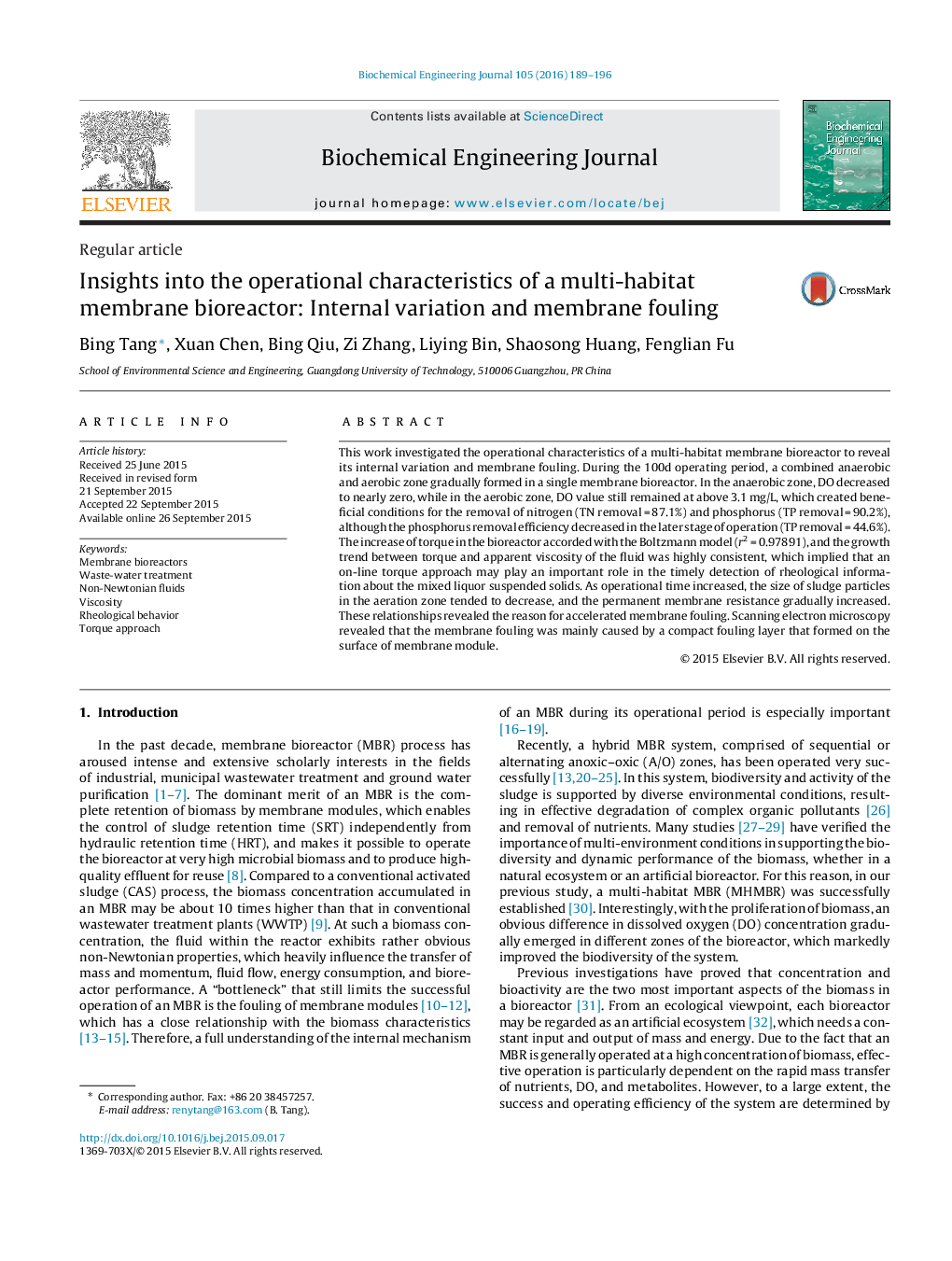| کد مقاله | کد نشریه | سال انتشار | مقاله انگلیسی | نسخه تمام متن |
|---|---|---|---|---|
| 2819 | 136 | 2016 | 8 صفحه PDF | دانلود رایگان |
• Insights into the internal variation of a multi-habitat MBR were presented.
• Permanent damage to membrane filterability may be caused by the growth of biomass.
• Timely rheological information of MLSS could be detected by an on-line approach.
• Variation of the torque and viscosity of the MLSS in reactor are highly consistant.
This work investigated the operational characteristics of a multi-habitat membrane bioreactor to reveal its internal variation and membrane fouling. During the 100d operating period, a combined anaerobic and aerobic zone gradually formed in a single membrane bioreactor. In the anaerobic zone, DO decreased to nearly zero, while in the aerobic zone, DO value still remained at above 3.1 mg/L, which created beneficial conditions for the removal of nitrogen (TN removal = 87.1%) and phosphorus (TP removal = 90.2%), although the phosphorus removal efficiency decreased in the later stage of operation (TP removal = 44.6%). The increase of torque in the bioreactor accorded with the Boltzmann model (r2 = 0.97891), and the growth trend between torque and apparent viscosity of the fluid was highly consistent, which implied that an on-line torque approach may play an important role in the timely detection of rheological information about the mixed liquor suspended solids. As operational time increased, the size of sludge particles in the aeration zone tended to decrease, and the permanent membrane resistance gradually increased. These relationships revealed the reason for accelerated membrane fouling. Scanning electron microscopy revealed that the membrane fouling was mainly caused by a compact fouling layer that formed on the surface of membrane module.
Figure optionsDownload as PowerPoint slide
Journal: Biochemical Engineering Journal - Volume 105, Part A, 15 January 2016, Pages 189–196
